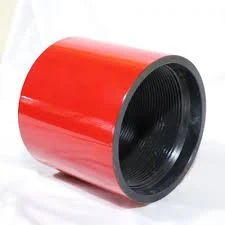- Afrikaans
- Albanian
- Amharic
- Arabic
- Armenian
- Azerbaijani
- Basque
- Belarusian
- Bengali
- Bosnian
- Bulgarian
- Catalan
- Cebuano
- Corsican
- Croatian
- Czech
- Danish
- Dutch
- English
- Esperanto
- Estonian
- Finnish
- French
- Frisian
- Galician
- Georgian
- German
- Greek
- Gujarati
- Haitian Creole
- hausa
- hawaiian
- Hebrew
- Hindi
- Miao
- Hungarian
- Icelandic
- igbo
- Indonesian
- irish
- Italian
- Japanese
- Javanese
- Kannada
- kazakh
- Khmer
- Rwandese
- Korean
- Kurdish
- Kyrgyz
- Lao
- Latin
- Latvian
- Lithuanian
- Luxembourgish
- Macedonian
- Malgashi
- Malay
- Malayalam
- Maltese
- Maori
- Marathi
- Mongolian
- Myanmar
- Nepali
- Norwegian
- Norwegian
- Occitan
- Pashto
- Persian
- Polish
- Portuguese
- Punjabi
- Romanian
- Russian
- Samoan
- Scottish Gaelic
- Serbian
- Sesotho
- Shona
- Sindhi
- Sinhala
- Slovak
- Slovenian
- Somali
- Spanish
- Sundanese
- Swahili
- Swedish
- Tagalog
- Tajik
- Tamil
- Tatar
- Telugu
- Thai
- Turkish
- Turkmen
- Ukrainian
- Urdu
- Uighur
- Uzbek
- Vietnamese
- Welsh
- Bantu
- Yiddish
- Yoruba
- Zulu
what is bull plug
Understanding the Bull Plug A Comprehensive Overview
The term bull plug may not be familiar to many, yet it represents a significant niche in the world of mechanical components, particularly in industries involving plumbing, pneumatic systems, and fluid dynamics. This article aims to shed light on what a bull plug is, its applications, and its importance in various fields.
What is a Bull Plug?
A bull plug is a type of plug used to seal off a pipe or a fitting. It is typically designed to fit into the opening of a valve or pipe to prevent the flow of fluids or gases. The bull plug is often constructed from various materials, including metal, plastic, or rubber, depending on its intended use and the nature of the environment in which it operates. Its design allows for easy installation and removal, making it an essential component in maintaining the integrity of piping systems.
Applications of Bull Plugs
Bull plugs are widely used in various industries, including construction, manufacturing, and oil and gas. In the construction industry, bull plugs serve to temporarily block foundation drains and water lines during the initial phases of building. This prevents water ingress and helps maintain dry working conditions.
In pneumatic systems, bull plugs are utilized to seal off unused ports on cylinders or valves. This is critical for maintaining the efficiency and performance of a pneumatic system by ensuring that air pressure is not lost through open ports. Additionally, in the oil and gas industry, bull plugs are used to seal pipe ends to prevent leakages, which is essential for safety and environmental protection.
what is bull plug

Importance of Bull Plugs
The proper use of bull plugs is vital for several reasons. First and foremost, they play a crucial role in safety by preventing hazardous leaks that could lead to accidents or environmental disasters. In high-pressure systems, even the smallest leak can have catastrophic consequences. Thus, bull plugs help ensure safety compliance in various industrial applications.
Moreover, bull plugs contribute to the efficiency of systems. By sealing off unused ports and preventing leaks, they help maintain the required pressure and flow rates, ultimately reducing energy costs and improving operational efficiency.
Installation and Maintenance
Installing a bull plug is typically straightforward. The plug must be selected based on the pipe diameter and type, ensuring a snug fit to prevent leakage. It is essential to inspect the bull plug regularly, particularly in high-stress environments, to ensure it remains in good condition and effectively seals the connection. Over time, wear and tear can necessitate replacement to maintain system integrity.
Conclusion
In conclusion, a bull plug may seem like a simple component but plays a critical role in various industrial settings. Its ability to seal pipes and fittings effectively ensures safety and efficiency, making it indispensable in construction, pneumatic systems, and the oil and gas industry. As industries continue to evolve and become more sophisticated, the importance of reliable components like bull plugs cannot be overstated. Understanding their functionality and maintaining their integrity is essential for anyone involved in the management and operation of mechanical systems. Whether you are an engineer, technician, or a DIY enthusiast, recognizing the role of bull plugs can enhance your approach to system design and maintenance, ultimately contributing to safer and more efficient operations.
-
Tubing coupling plays a significant role in the chemical industryNewsApr.03,2025
-
The Importance of Tubing Crossover in Various Industrial FieldsNewsApr.03,2025
-
The characteristics and important role of Tubing Pup JointNewsApr.03,2025
-
Characteristics and functions of Pup jointNewsApr.03,2025
-
Characteristics and Functions of Pup Joint PipeNewsApr.03,2025
-
Application of Coupling Casing in Various ScenariosNewsApr.03,2025







